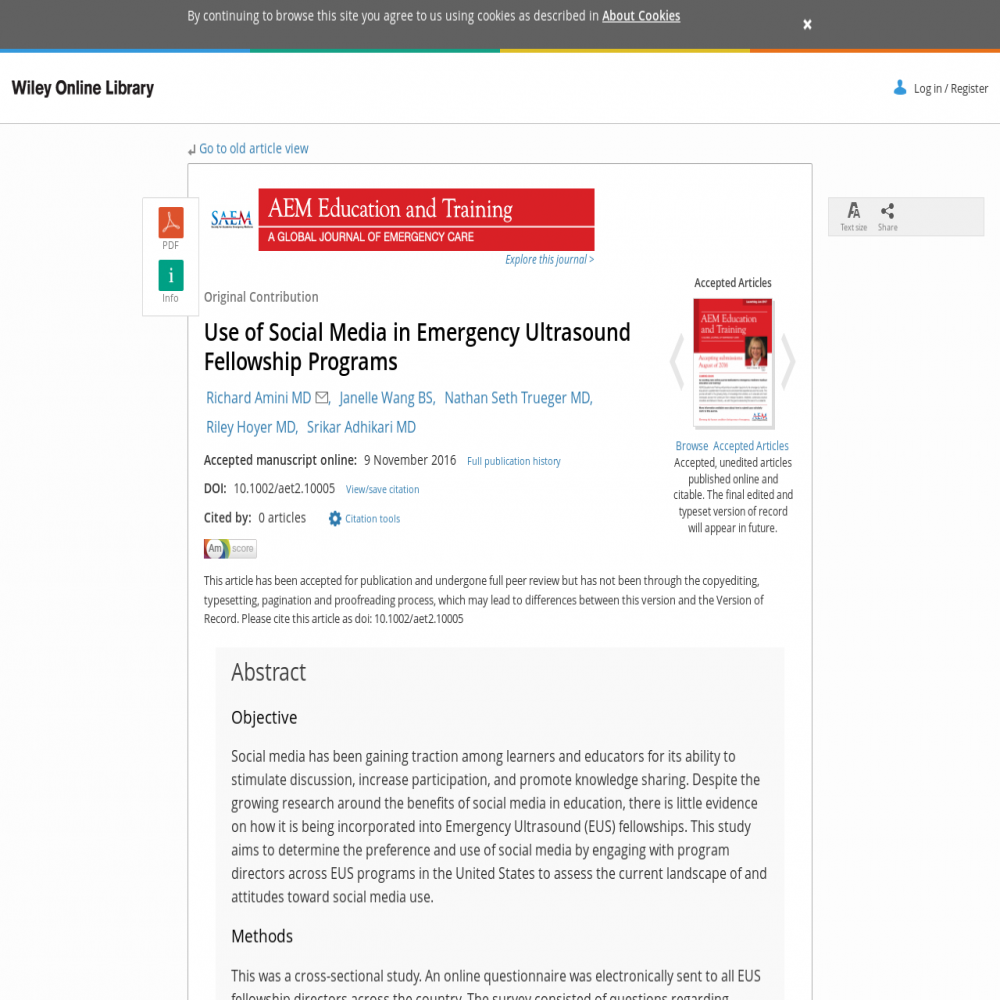Use of Social Media in Emergency Ultrasound Fellowship Programs
A healthcare social media research article published in AEM Education and Training: A Global Journal of Emergency Care, January 19, 2017
- Title
- Use of Social Media in Emergency Ultrasound Fellowship Programs
- Authors (alpha)
- Janelle B. Wang, N. Seth Trueger, Richard Amini, Riley Hoyer, Srikar Adhikari
- Published
- January 19, 2017
- Journal
- AEM Education and Training: A Global Journal of Emergency Care
- DOI
- 10.1002/aet2.10005
- Pubmed
- 30051005
- Altmetric
Abstract
Social media has been gaining traction among learners and educators for its ability to stimulate discussion, increase participation, and promote knowledge sharing. Despite the growing research around the benefits of social media in education, there is little evidence on how it is being incorporated into emergency ultrasound (EUS) fellowships. This study aims to determine the preference and use of social media by engaging with program directors across EUS programs in the United States to assess the current landscape of and attitudes toward social media use. This was a cross-sectional study. An online questionnaire was electronically sent to all EUS fellowship directors across the country. The survey consisted of questions regarding current practice patterns, policies, and perceptions regarding the use of social media in EUS fellowship programs. Ninety-six ultrasound fellowship programs were identified for inclusion into this study. A total of 64 participants completed the survey, representing a 63% response rate. Thirty-eight percent (95% confidence interval [CI] = 26% - 50%) of responding fellowship programs have an official social media outlet and 25% have a separate ultrasound handle for their EM residency program. Fifty-eight percent (95% CI = 46% - 70%) of programs do not provide training to fellows and residents on the social media outlets used by their program. The top two social media outlets currently being used by programs are Twitter and YouTube to disseminate educational content and knowledge sharing. Twenty-eight percent (95% CI = 17% - 39%) of programs create or post new ultrasound content at least once per month. Regarding barriers in the use of social media in EUS fellowships, 57% (95% CI = 45% - 69%) of program directors sited lack of time as the primary reason for decreased usage and implementation. Eighty-four percent (95% CI = 75% - 93%) of responders felt that social media has the potential to impact patient care. The results of this study indicate that there is perceived value in utilizing social media resources in EUS education; however, certain challenges need to be further evaluated.
Altmetric
The Altmetric Attention Score is based on the attention a research article gets on the internet. Each coloured thread in the circle represents a different type of online attention and the number in the centre is the Altmetric Attention Score. The score is calculated based on two main sources of online attention: social media and mainstream news media.
Healthcare Social Media Research
See the full list of healthcare social media research articles with data from or reference to Symplur.
#hcsmR is a collaboration between Stanford Medicine X and Symplur.


